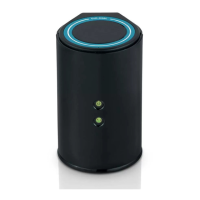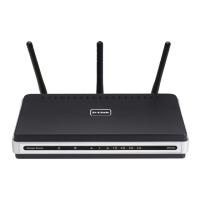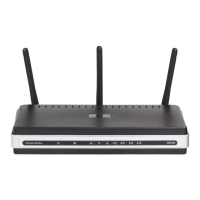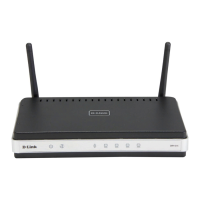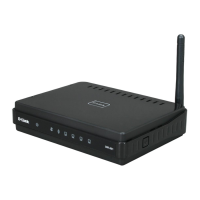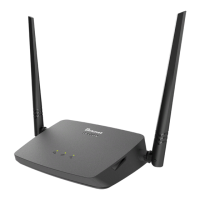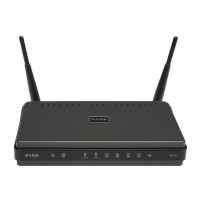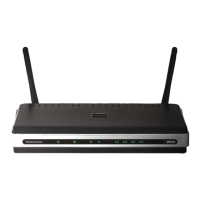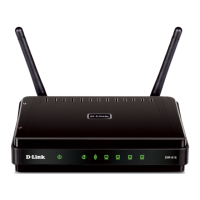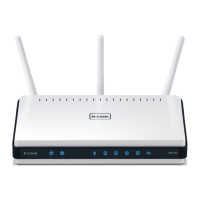
 Loading...
Loading...
Do you have a question about the D-Link DIR-632 and is the answer not in the manual?
| LAN ports | 8 10/100 LAN Ports |
|---|---|
| WAN port | 1 10/100 WAN Port |
| device management | Internet Explorer v7 or Later; Mozilla Firefox v3.0 or Later; or other Java-enabled Browsers |
| item dimensions | 230mm x 150mm x 33mm |
|---|---|
| packaging dimensions | 276.9mm x 66mm x 205.8mm |
| item weight | 272.2 grams |
Defines the manual's scope and intended readers, covering basic networking concepts for home and office users.
Explains formatting elements like text examples, notes, and references used throughout the manual for clarity.
Outlines the content of each chapter, providing a roadmap for the user to navigate the manual's sections.
Provides a general description of the DIR-632 as a multifunction wireless router supporting WiMAX and 3G.
Lists technical specifications including WAN, LAN, WLAN, USB interfaces, and network functions.
Details supported USB modem types and functions for USB storage devices like file browsing and print serving.
Covers wireless connection standards, frequency ranges, data rates, and transmission power.
Includes transmitter output power, EIRP, and receiver sensitivity details for wireless performance.
Describes firewall functions, configuration options, LEDs, power, operating, and storage conditions.
Illustrates the router's physical design, focusing on the top panel and its indicators.
Identifies and describes the ports and buttons located on the back panel of the router.
Lists all items included in the product package for user convenience.
Covers prerequisites like operating system, web browser, network adapter, and wireless setup.
Details steps for connecting and configuring WiMAX and 3G USB modems for internet access.
Guides users on establishing PC connectivity via Ethernet and Wi-Fi adapters.
Provides step-by-step instructions for setting up automatic IP address acquisition in Windows XP and 7.
Explains how to connect a PC to the router's wireless network using Wi-Fi adapters in different Windows versions.
Details the process of logging into the router's web-based interface for configuration.
Explains how to save current configurations, restore factory defaults, and back up settings.
Guides users through the Click'n'Connect wizard for setting up various WAN connection types.
Details configurations for PPPoE, Static IP, Dynamic IP, PPTP/L2TP, and 3G WAN connections.
Explains how to verify the router's internet connection status and troubleshoot potential issues.
Covers settings for SSID, security, MAC filtering, WPS, and additional wireless parameters.
Provides a wizard-driven approach to configure basic and advanced wireless network settings.
Details security options like WEP, WPA/WPA2-PSK for securing the wireless network.
Explains how to filter wireless network access based on device MAC addresses.
Describes how to use WPS for easily and securely connecting wireless devices to the network.
Covers advanced wireless parameters like Beacon Period, RTS Threshold, and TX Power.
Explains the WMM function for prioritizing wireless traffic and improving QoS.
Details how to configure the router for IPTV set-top box connectivity.
Covers firewall configuration, including IP filters for packet control.
Guides on creating virtual servers for port forwarding and configuring DMZ for specific hosts.
Explains how to configure MAC address-based filtering within the firewall settings.
Covers configuration of network parameters including WAN connection management.
Details configuration of the router's local interface, including IP address and DHCP server settings.
Shows current network status, including connection states and data transfer volumes.
Lists devices connected via DHCP, displaying their hostnames, IP, and MAC addresses.
Presents the router's routing table with information on network routes and gateways.
Displays a list of devices currently connected to the router's LAN.
Covers creating and editing port groups for Virtual Local Area Networks (VLANs).
Explains how to enable or disable the Universal Plug and Play (UPnP) function for network devices.
Details how to configure Dynamic DNS services for associating domain names with dynamic IP addresses.
Guides on setting up DNS servers for name resolution, either automatically or manually.
Explains how to add and manage static routes for networks not directly connected to the router.
Details how to configure rules for allowing or restricting remote access to the router's web interface.
Covers enabling and configuring the IGMP protocol for managing multicast traffic.
Displays information about the connected USB modem and manages its PIN code.
Provides instructions for changing, enabling, or disabling the USB modem's PIN code check.
Shows status and information for the connected WiMAX modem, including link status.
Presents details about connected USB storage, including capacity and file system type.
Allows viewing and managing files and folders on the connected USB storage.
Guides on configuring the router to act as a print server for shared USB printers.
Details how to enable the built-in FTP server for network access to USB storage content.
Enables and configures restrictions on accessing specific websites via URL filtering.
Provides access to core system settings like password, configuration, logs, and firmware.
Details how to change the administrator password for secure access to the router's interface.
Explains how to save, backup, and restore router configurations and factory defaults.
Covers configuring system log options, including local storage and remote sending.
Provides instructions for upgrading the router's firmware to the latest version.
Details how to configure automatic system time synchronization using an NTP server.
Explains how to use the traceroute utility to define data transfer routes to a host.
Covers enabling or disabling access to device settings via Telnet from the LAN.
Guides on creating and managing user accounts for accessing USB storage content.
Lists compatible USB modems (GSM, CDMA, WiMAX) for use with the router.
Provides essential safety information for router placement, power, and handling.
Offers advice on optimizing wireless signal range by considering walls, materials, and interference.
Step-by-step instructions for connecting the router to a cable or DSL modem.

